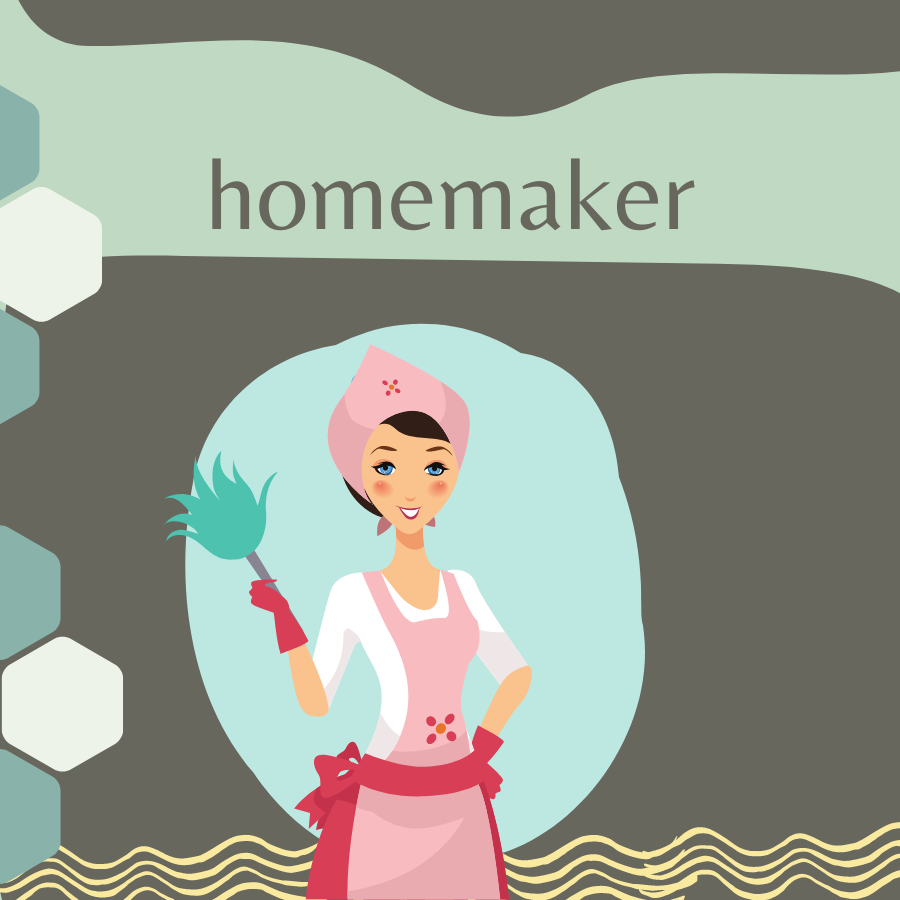Let’s Talk about the Stay at Home Girlfriend Trend
I heard through the grapevine (Instagram) that there is a new trend on TikTok (which I do not use) centered around glorifying something called the “Stay at Home Girlfriend” lifestyle.

For said trend, women who are financially supported by their boyfriends in exchange for home-keeping (doing laundry, preparing food etc) post calm, almost meditative videos about their day-to-day activities glamorizing their kept-woman lifestyle.
There are videos of these women doing laundry, steaming clothes, fluffing pillows, and even doing yoga and getting facials to keep themselves fit and looking hot for their men. The general vibe is like a modern-day aesthetically pleasing ASMR-infused 1950s wife life minus the ring and (in the cases I have seen) the kids.

Also, for some reason, a large portion of these videos are of these women making smoothies. Like. A LOT of smoothies. At all hours of the day and night. I don’t know why. (If anyone does know why the stay-at-home girlfriend lifestyle requires the production of so many frozen beverages, please enlighten me!)
Anyway, after investigating a little further (totally going down a rabbit hole), I found a pretty hefty debate going on between those who support the trend and those who are vehemently opposed to it.
This is not some itty bitty debate, by the way. According to Salem Tovar, a YouTuber who covered this issue thoroughly on her channel, the hashtag #stayathomegirlfriend had over 133.3 MILLION views when she posted her video in December of 2022.
Bottom line: people are PISSED OFF.
But should they be?
Let’s decide together, shall we?
Or not. The point of this blog post isn’t to convince anyone that either side is correct. The point is to present both sides of the argument and then let you (the reader), decide for yourself (or not). Being on the fence is perfectly acceptable, especially when it comes to such a difficult and nuanced debate.
But first: A (very) brief history of the unpaid labor of women…
Until the mid-1800s, women in America were not allowed to inherit/own land independently of their husbands. This meant that women were often socioeconomically powerless because the measure of one’s wealth and social rights was directly proportional to how much land one owned.
Plus, in terms of inheritance, land was most often handed down via the male bloodline, so generational wealth was also most often accumulated by men rather than women.
Even though laws did eventually pass to allow women to own land, accumulating wealth and resources on their own was still a major struggle for women compared to their male counterparts. When women did work outside of the home, their pay was substantially lower than that of men – an inequity we still see in today’s society, so that they could barely afford to live on their own means, let alone buy land with it.
Hence women were uncompensated for their work, even though all that they did at home (washing, cooking, cleaning, caregiving, child-rearing, etc.) enabled the men in their lives to go forth to the outside world to attain fame and fortune. These stay-at-home women continued to serve men and their needs through unpaid labor not out of desire but out of necessity.
NOTE: If you want to learn more about some early feminists who expound on the topic of early gender inequality in the workspace, check out Mary Harris “Mother” Jones (1837-1930) and Alexandra Kollonti (1872-1952).
So, unable to attain financial freedom and independence, women have historically been dependent on men, and being a housewife (the precursor to Tiktok’s Stay-At-Home-Girlfriend) was emblematic of this often forced dependency.
Many feminists from Josaphine Lowell to Lucy Parsons to Rosina Tucker and LOTS more fought this dependency by advocating for a woman’s right to work and earn fairly. These ladies blazed the trail for power women and girl bosses everywhere.
And now this little history lesson has segued us perfectly to the first reason so many people are upset by the stay-at-home-girlfriend trend.
Argument: Being a SAHG is anti-feminist.
As we have seen, the whole concept of the stay-at-home wife was incredibly anti-feminist. Silvia Federici was one of the first bomb-ass feminists to explain how the unpaid labor of women fueled capitalism, making it possible for men to reach heights they otherwise would not have been able to achieve without the millions of unseen and unheard women working tirelessly behind the scenes.
Think of all our feminist matriarchs who fought vehemently against the free labor of women and who rallied for our rights to financial freedom from men. Isn’t it a huge slap in their faces for women to turn around and run back into the arms/homes of our original oppressors?
Counterargument:
What those feminist matriarchs were fighting for wasn’t for all women to become power women or girl bosses. What they were really fighting for was a woman’s right to choose her own destiny, independent of societal pressure. If a woman chooses the SAHG lifestyle, then that is her right. It is anti-feminist for anyone to tell her how she should and should not choose to spend her time.
Argument: Stay-at-home girlfriends should not be rewarded for doing “nothing” and being lazy.
Counterargument:
Doing housework is absolutely NOT doing “nothing.” In fact, word, “work” is in the name.
Put another way, can you imagine asking a stranger to cook, clean, organize the home, shop, and generally care for you for free? Of course not, because all these home to-do list items take time and energy and often skill, just like any office to-do list item.
Again, housework IS work.
By that measure, stay-at-home girlfriends do have a job. Maybe they aren’t paid by the hour (or maybe they are, that’s really none of our business), but they are making a livelihood by doing work. So…. What’s the problem?
Argument: Being a SAHG is detrimental to women in the long run.
A lot of these arguments boil down to “You can’t put “Stay-At-Home-Girlfriend” on a resume if things don’t work out with your guy in the long run.”
Counterargument:
This may be true, but a lot of homemakers do end up having alternate careers. Who says these women can’t do the same?
Argument: The SAHG trend glamorizes an unattainable lifestyle.
The whole stay-at-home-girlfriend TikTok aesthetic is so easy-breezy and picture-perfect that it glamorizes women having all the time in the world to treat and pamper themselves when, in reality, it is not attainable for most women to find a man who can accommodate this lifestyle.
Counterargument:
Glamorizing an unattainable lifestyle is not a SAHG issue. It is a social media issue.
One major reason social media is so toxic is that it makes us want things we can’t have. From picture-perfect home decor to the glamorizing of soaring self-made careers to impossible beauty standards, it perpetuates ideals that are naturally unattainable for many and also often only exist in the vacuum of the Internet. (That room only looked that good long enough to take that photo. That person may be successful, but there are years of blood, sweat, and tears that have gone into their success. Anyone can use those filters.)
AKA, social media is not real. This is definitely a problem, but it is a social media problem, not a SAHG problem.
Argument: Being a SAHG is an unfulfilling way to live.
Counterargument:
For some, sure. But obviously, not for these ladies. Again, it’s their right to choose what is right for them.



Pingback: Social Security Advice for Future Homemakers - Dear Darlene